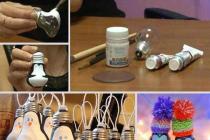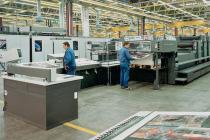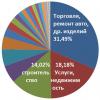1. BRIEF BIOGRAPHY OF ALFRED NOBEL
Alfred Nobel was born on October 21, 1833 in Stockholm. His father, Immanuel Nobel (1801-1872), a middling entrepreneur, having gone bankrupt, decided to try his luck in Russia and in 1837 moved to St. Petersburg. Here he opened mechanical workshops, and five years later, when things got better, he moved his family to St. Petersburg. For nine-year-old Alfred, Russian very soon became his second native language. In addition, he was fluent in English, French, German and Italian.
During the Crimean War of 1853-1856, Nobel's workshops produced underwater mines and other weapons for the Russian navy. Immanuel Nobel was awarded the gold medal "For Diligence and Development of Russian Industry", but after the end of the war, there were no naval orders, and in 1859 he returned to Stockholm.
Alfred Nobel did not receive a systematic education. At first he studied at home, then traveled around America and Europe for educational purposes, and after that he studied chemistry in Paris for two years in the laboratory of the famous French scientist T. Peluza. After his father left for Stockholm, Alfred Nobel began researching the properties of nitroglycerin. Perhaps this was facilitated by the frequent communication of Nobel with the outstanding Russian chemist Zinin. But on September 3, 1864, Stockholm was rocked by a powerful explosion. One hundred kilograms of nitroglycerin, waiting to be sent to the new factory of the Nobel brothers, turned the building into ruins and buried all the workers under the rubble. Swedish newspapers wrote in horror: "There were no corpses, only a pile of meat and bones." Alfred escaped with minor wounds on his face, but the worst news awaited him ahead: during the disaster, along with the workers, his younger brother Emil, who came to visit his relatives on vacation, died. When the father was informed of what had happened, he remained silent for several minutes, then jerked his head, as if about to say something, and awkwardly collapsed into an armchair: the old man was paralyzed.
On October 14, 1864, Alfred Nobel took out a patent for the right to produce an explosive containing nitroglycerin. This was followed by patents for the detonator ("Nobel fuse"), dynamite, gelled dynamite, smokeless powder, etc. and so on. In total, he owns 350 patents, and not all of them are related to explosives. Among them are patents for a water meter, a barometer, a refrigeration apparatus, a gas burner, an improved method for producing sulfuric acid, a military missile design, and much more. Nobel's interests were extremely diverse. He studied electrochemistry and optics, biology and medicine, designed automatic brakes and safe steam boilers, tried to make artificial rubber and leather, studied nitrocellulose and rayon, and worked on obtaining light alloys. Undoubtedly, he was one of the most educated people of his time. He read many books on technology and medicine, history and philosophy, fiction (and even tried to write himself), was acquainted with kings and ministers, scientists and entrepreneurs, artists and writers, such as Victor Hugo. Nobel was a member of the Swedish Academy of Sciences, the Royal Society of London, the Paris Society of Civil Engineers. Uppsala University awarded him an honorary Ph.D. Among the inventor's awards are the Swedish Order of the Polar Star, the French Order of the Legion of Honor, the Brazilian Order of the Rose and the Venezuelan Order of Bolivar. But all honors left him indifferent. He was a gloomy man who loved loneliness, avoiding cheerful companies and completely immersed in work.
In June 1865 Alfred moved to Hamburg. Albert arranged an advertising display of explosives, calmly kept bottles of nitroglycerin in boiling water, smashed them on a stone platform, set fire to a torch - the explosive behaved calmly. Everyone was confident in the possibility of complete control of this substance, but two months later, in November 1865, there were explosions at two mines in Sweden, then the Nobel plant in Krümmel flew into the air, a few days later, the explosion of the nitroglycerin plant shocked the United States, and soon ships carrying nitroglycerin began to sink. The panic began. Many countries have adopted laws prohibiting the production and transportation of nitroglycerin and substances containing it in their territories. The family was utterly ruined. The shipping companies and the families of the victims filed gigantic lawsuits. But Nobel did not break down. Having patented the Dynamite trademark on May 7, 1867, Nobel began to collect huge profits. Newspapers of those years wrote that the engineer made his discovery by accident. During transportation, a bottle of nitroglycerin broke, the spilled liquid soaked the ground, and the result was dynamite. Nobel has always denied this. He claimed that he was deliberately looking for a substance that, when mixed with nitroglycerin, would reduce his explosiveness. Kieselguhr became such a neutralizer. This rock is also called tripol (from Tripoli in Libya, where it was mined). It may seem strange that a man who devoted his whole life to the creation of powerful means of destruction, bequeathed part of the money he earned to peace prizes. What is this? Redemption? But for military purposes, "Nobel's explosives" began to be used only during the Franco-Prussian war of 1870-1871, and at first the explosives he created were used for peaceful purposes: for building tunnels and canals with the help of blasting, laying railways and roads, mining mineral. He himself said: "I would like to invent a substance or a machine with such destructive power that any war in general would become impossible." Nobel gave money for holding congresses on peace issues, and took part in them.
When Nobel undertook the creation of a "superweapon", he formulated his "anti-war" position at that moment as follows: "My dynamite factories will sooner end the war than your congresses. On the day when two armies can mutually annihilate within a few seconds, all civilized the nations, terrified, will disband their armies." The habit of thinking globally remained with him until the end of his days.
One thought haunted Alfred: who would get his gigantic fortune? The brothers did not live in poverty - the volume of production of Baku oil, owned by the Nobel family, at that time exceeded the volume of oil produced in the United States, and accounted for more than half of the entire world production. Alfred did not like distant relatives and, not without reason, considered them idlers waiting for his death. Having broken his smart head for more than one day and more than one night, Nobel decided to create a special fund. Here played a role, I think, and one misunderstanding. One day, namely on April 13, 1888, Alfred found an obituary in the morning newspaper, which said that he ... had died. About the deceased, it was said approximately in the same spirit that he is a "dynamite king" and a "dealer in death", and about income: "a fortune acquired by blood." (Perhaps for the first time Alfred Nobel was puzzled by the question: what do people all over the world think about him.) He did not immediately understand that the clumsy author had confused him with his brother Ludwig ... And one night Nobel made an addition to his will. The king of dynamite, the richest of the people, wanted to have his veins cut after death, just in case. More than anything, he was afraid of being buried alive...
The realization that the wealth acquired mainly on dynamite, thanks to the fund created according to his will, would serve progress and the cause of peace, encouraged Nobel.
Nobel discovered that nitroglycerin as part of an inert substance such as diatomaceous earth (kieselguhr) became safer and more convenient to use, and he patented this mixture in 1867 under the name "dynamite". He then combined nitroglycerin with another high explosive, gunpowder, to produce a clear, jelly-like substance that was more explosive than dynamite. Explosive jelly, as it was called, was patented in 1876. This was followed by experiments on making similar combinations with potassium nitrate, wood pulp, etc. A few years later, Nobel invented ballistite, one of the first nitroglycerin smokeless powders, consisting in one of the latest versions equal parts gunpowder and nitroglycerin. This powder would become the forerunner of cordite, and Nobel's claim that his patent also included cordite would be the subject of bitter litigation between him and the British government in 1894 and 1895.
Cordite also consists of nitroglycerin and gunpowder, and the researchers wanted to use the most nitrated form of gunpowder, insoluble in mixtures of ether and alcohol, while Nobel proposed the use of less nitrated forms that are soluble in these mixtures. The issue was complicated by the fact that in practice it is almost impossible to prepare one of the forms in its pure form, without admixture of the second. Ultimately, the court ruled against Nobel. From the production of dynamite and other explosives, Nobel accumulated a significant fortune.
"Ideas of Great Russia" according to the article by Struve P.B.
Struve national russia politics "Academician who is always learning" - this is what contemporaries used to say about the outstanding Russian thinker and politician Pyotr Berngardovich Struve (1870-1944). Struve really studied a lot...
August Yulievich Davidov
Amvgust Yumlevich Davimdov (1823-1885/1886) - Russian mathematician and mechanic, Honored Professor of the Imperial Moscow University; author of works on differential equations with partial derivatives...
Mining in the writings of George Agricola
George Agricola (real name Georg Pawer - Georg Bauer) is a German scientist who is considered one of the fathers of mineralogy. As a Renaissance scientist, he also achieved outstanding achievements in the fields of education, medicine, metrology...
Activities N.N. Muravyov-Amursky
A descendant of a famous and ancient noble family, Muravyov was a direct descendant of Lieutenant Stepan Voinovich Muravyov, a member of the Second Kamchatka Expedition led by V.I. Bering...
Life and work of N.V. Vershinin
Nikolai Vasilyevich Vershinin (1867-1951) is rightfully considered the father of the Siberian pharmacological school. He devoted his whole life to tireless creative work - a passionate search for scientific truth. Great erudition, dedication to work...
Life and work of N.Ya. Danilevsky
Danilevsky Nikolai Yakovlevich (1822-85), publicist, sociologist and naturalist, one of the many Russian minds who anticipated the original ideas that arose later in the West. In particular...
The life and work of Carl Rossi
Karl Ivanovich Rossi (Carlo di Giovanni Rossi) was born on December 18, 1775 in the family of the Italian ballerina Gertrude Rossi in Naples. In August 1785, she, along with her child ...
Hitler (Hitler) [real name - Schicklgruber (Schicklgruber)] Adolf (April 20, 1889, Braunau, Austria - April 30, 1945, Berlin), leader of the German fascist (National Socialist) party, head of the German fascist state (1933-45) , the main war criminal ...
Political figures of the Second World War. but on the other hand
Benimto Amimlcare Andrema Mussolimni (July 29, 1883 - April 28, 1945) - Italian politician, writer, leader of the Fascist Party (NFP), dictator ("Duce"), who led Italy (as prime minister) from 1922 to 1943. First Marshal of the Empire (March 30, 1938)...
Political figures of the Second World War. but on the other hand
32nd President of the United States, elected four times, Democrat. Born on January 30, 1882, near New York, in a family of very wealthy parents: a native of Holland, James Roosevelt and Sarah Delano, who belongs to a prominent Jewish clan ...
Political figures of the Second World War. but on the other hand
Political figures of the Second World War. but on the other hand
Winston Churchill (Winston Leonard Spencer-Churchill) (1824 - 1965) - Prime Minister, politician and statesman of Great Britain, Nobel Prize winner, writer. Winston Churchill was born on November 30, 1874 in Blenheim...
Reforms of Alexander II
Alexander II - the son of the king, the pupil of the poet. Alexander Nikolaevich Romanov, the first-born of the grand-ducal family - Nikolai Pavlovich and Alexandra Feodorovna - was born on Easter week on April 17, 1818 in Moscow, in the Kremlin and was baptized in the Miracle Monastery ...
The role of Stefan Batory in the history of Belarus
Born in Transylvania, the son of Prince Istvan IV Báthory and Katarzyna Telegdi, daughter of the Crown Treasurer Stephen Telegdi. Studied at the University of Padua. In 1571-1576 - Transylvanian prince ...
Financial and credit reform E.F. Kancrina
A German by birth, Yegor Frantsevich Kankrin gave all his knowledge and strength to Russia, which became his homeland. Arriving in 1797 in Russia, where his father then served...
Alfred Bernhard Nobel - chemist and engineer from Sweden, invented dynamite, explosive jelly, cordite.
The future scientist, a Swede by nationality, was born on October 21, 1833. Alfred's father was the autodidact inventor Immanuel Nobel, a peasant from the Nobelef district. The nugget scientist became famous for making military mines that were used by Russian artillery during the Crimean War. For this invention, the Swede was presented with an imperial award.
Mother Andriette Nobel was a housewife, raised four sons: Alfred, Robert, Ludwig and Emil. The family first lived in Sweden, then moved to Finland, after which they emigrated to Russia, to St. Petersburg. Immanuel was engaged not only in weapons business, Nobel's father made a great contribution to the development of home heating systems using water vapor. The engineer invented machines for assembling wheels for carts.
Nobel's children were educated at home. They had governesses who taught the brothers natural sciences, literature and European languages. By the end of their studies, the boys spoke Swedish, Russian, French, English and German. At the age of 17, Alfred was sent on a trip to Europe and the USA. In the capital of France, the young man managed to work with the scientist Theophile Jules Peluza, who in 1936 determined what glycerin consists of. Peluza, together with Ascanio Sobrero in 1840-1843, worked on the creation of nitroglycerin.

Under the guidance of the Russian scientist Nikolai Nikolaevich Zinin, Alfred became interested in studying glycerol trinitrate. The scientific work eventually led the young scientist to an invention that made the chemist famous. The main work in the biography of Nobel is the creation of dynamite, which was recorded on May 7, 1867.
Science and inventions
From France, Nobel is sent to the United States to work together in the laboratory of an American inventor of Swedish origin, John Erickson, who developed the Monitor warship, which participated in the civil war between northerners and southerners. The scientist was also studying the properties of solar energy. A young student under the guidance of a master conducts independent chemical and physical experiments.

Returning to Stockholm, Nobel does not stop there. The chemist is working to find an active substance that reduces the explosiveness of glycerol trinitrate. As a result of one experiment, which was carried out at the Nobel factories in Stockholm, on September 3, 1864, an explosion occurred. The accident claimed the lives of several people, including Emil's younger brother. At the time of the disaster, the young man was barely 20 years old. The father did not survive the loss, fell ill after a stroke and did not get up until his death.
A month after the tragedy, Alfred managed to obtain a patent for nitroglycerin. After that, the engineer patented the creation of dynamite, a detonator of gelatinous dynamite and other explosives. The scientist also succeeded in the development of household devices: a refrigeration apparatus, a steam boiler, a gas burner, a barometer, a water meter. The chemist made 355 inventions in the field of biology, chemistry, optics, medicine, metallurgy.
Nobel was the first to develop the chemical composition of rayon and nitrocellulose. The scientist popularized each invention with the help of lectures with demonstrations of the capabilities of the device or substance. Such presentations by the chemical engineer were famous among the inexperienced public, colleagues and friends of Nobel.
 Dynamite invented by Alfred Nobel
Dynamite invented by Alfred Nobel Nobel was fond of writing literary works, art books. The chemist's outlet was poetry and prose, the composition of which the scientist passed on in his spare time. One of the controversial works of Alfred Nobel was the play "Nimesis", which for many years was banned from publication and staging by church ministers, and only in 2003, on the scientist's memorial day, it was staged by the Stockholm Drama Theater.
 Alfred Nobel's play "Nemesis"
Alfred Nobel's play "Nemesis" Alfred was interested in science, philosophy, history and literature. Nobel's friends were famous artists, writers, scientists, statesmen of that time. Nobel was often invited to receptions and royal dinners. The inventor was an honorary member of many European academies of sciences: Swedish, English, Paris, Uppsala University. His track record includes French, Swedish, Brazilian, Venezuelan orders and awards.
The Nobel family experienced financial difficulties associated with constant spending on experiments. But in the end, the brothers acquired a stake in the Baku oil field and became rich.

At the International Peace Congress, which took place in Paris in 1889, Nobel delivered his own lectures. This caused sarcasm among some participants of the event. In the head of many leading figures of the world it did not fit how a person who invented a weapon of murder and war could appear at a peace meeting. In the press, Alfred was called the "King of Murder", "Blood Millionaire", "Explosive Death Speculator". Such an attitude towards the scientist upset him and almost broke him.
Personal life
Alfred Nobel lived as a bachelor, he did not have a wife. The first girl the future scientist fell in love with was a young pharmacist. Shortly after meeting Nobel, the young lady died of tuberculosis. Alfred did not cry for his beloved for long, the dramatic actress attracted the attention of the engineer, and Nobel even asked his mother for blessings on marriage. But the far-sighted Andriette did not approve of her son's choice. After breaking up with the theater star, Alfred went to work and stopped looking for a life partner.

But in 1874, there were changes in the personal life of the scientist. In search of a secretary, Alfred met Countess Bertha Kinsky, who soon became the scientist's lover. After several years of passionate friendship, the girl left her admirer and left for the capital of Austria to another groom.
In recent years, Alfred was attacked by an uneducated peasant woman who dreamed of becoming the wife of a famous engineer. But Alfred Nobel categorically rejected the claims of the girl.
In 1893, Alfred Nobel drew up the first will, which indicated that a significant part of the scientist's capital should be transferred after the death of the chemist to the Royal Academy of Sciences. It was supposed to open a fund for the transferred amount, which would annually transfer an award for discoveries. At the same time, Nobel bequeathed 5% of the inheritance to Stockholm University, Stockholm Hospital and Karolinska Medical University.
 Testament of Alfred Nobel
Testament of Alfred Nobel But two years later, the will was changed. The document already canceled payments to relatives and organizations, and recommended the creation of a fund in which the scientist's capital would be stored in the form of shares and bonds. Income from securities was obliged to divide annually equally into five premiums. Each award (now the Nobel Prize) will recognize discoveries in physics, chemistry, physiology or medicine, literature, and the peace movement.
Death
On December 10, 1896, the engineer died of a stroke at his own villa in San Remo. The ashes of the scientist were transported to their homeland and buried in the cemetery of Norra.
 Grave of Alfred Nobel
Grave of Alfred Nobel Three years passed after the opening of the will and before the execution of the will of Alfred Nobel. After the formalities were settled by the Swedish parliament in 1901, the first cash awards were paid to distinguished scientists.
- According to rumors, Alfred came up with the main invention by accident: during the transportation of nitroglycerin, one bottle broke, the substance fell on the soil and an explosion occurred. But the scientist himself did not confirm this version. Nobel claimed that he achieved the necessary result through painstaking experiments.
- Alfred Nobel was buried by the public while still alive in 1888. The journalists perceived the erroneous message about the death of the scientist's elder brother as news of the death of Alfred Nobel and hurried to cover such a joyful event for them. In those days, Alfred learned how negatively society perceives the scientist's discoveries. Being a pacifist, Nobel came up with a way to whitewash his own name forever, bequeathing capital to future generations of scientists and peacemakers.

- Scientists wondered why the Nobel did not award a prize for achievements in mathematics. Many agreed that Alfred had a personal dislike for the mathematician Mittag-Leffler. But in fact, Alfred Nobel considered this science to be an auxiliary tool for conducting research in the field of chemistry and physics.
- A century later, in the United States, the Ig Nobel Prize was organized by the editor of a satirical publication, Mark Abrahams, which began to be awarded to inventors for the most unusual and unnecessary achievements.
Born in the family of an inventor, Alfred Nobel devoted his whole life to his only love - working on a substance that would prevent all wars in the world. A fanatical commitment to explosives played a cruel joke on him, but it was his fatal mistake that became the motivation - to establish an award for the greatest achievements in science and art.
Family and childhood
Alfred Nobel was born in the family of a gifted inventor and mechanic Emmanuel, and was the third child of eight born. Unfortunately, of all the children in the family, only four survived - in addition to Alfred, three of his brothers.
In the year when the future famous chemist was born, his parents' house burned to the ground. Over time, some symbolism will be seen in this - after all, fire and explosions will become part of Nobel's life.
After the fire, the family had to move to a much smaller house on the outskirts of Stockholm. And the father began to look for work in order to somehow feed his large family. But he did it with difficulty. Therefore, in 1837, he fled the country to save himself from creditors. First, he went to the Finnish city of Turku, then moved to St. Petersburg. At that time he was working on his new project - explosive mines.
While his father was looking for happiness abroad, three children and his mother were waiting for him at home, barely making ends meet. But five years later, Emmanuel called his family to Russia - the authorities appreciated his invention and offered to work on the project further. Emmanuel moved his wife and children to St. Petersburg - out of dire need, the family suddenly falls into the upper strata of society. And Emmanuel's children have a chance to get a good education. At 17, Alfred could boast of knowing five languages: Russian, Swedish, German, English and French.
Despite his good knowledge of technology and engineering, Alfred was also very interested in literature. But the father was not very happy when his son announced his desire to devote his life to writing. Therefore, the father goes to the trick: he gives his son the opportunity to go on an expedition around the world, but in return he forever forgets about literature. The young man could not resist the temptation of travel and went to Europe, and then to America. But, even having made a promise to his father, Alfred could not abandon literature forever: secretly, he continues to write poetry. Although the courage to publish them, he still lacks. Over time, he will burn everything written, showing readers only his only work - the play "Nemesis", which he wrote almost at death.
In the meantime, things are going well for Father Alfred - during the Crimean War, his inventions were very useful to the Russian government. Therefore, he was finally able to get rid of long-standing debts in Sweden. Alfred later refined his experiments with explosives, making a career in this area.
Alfred and explosives
While traveling in Italy, Alfred met the chemist Ascanio Sobrero. The main development of his life was nitroglycerin - an explosive substance. Although the researcher himself did not fully understand where it could be applied, Alfred immediately appreciated the novelty - in 1860 he wrote in his diary that he was "working on a new project and had already achieved very great success in experiments with nitroglycerin."
After the end of the Crimean War, the need for explosives in the Russian Empire decreased, and Emmanuel's affairs again went badly. He returned to Sweden with his family, soon came to Alfred, who continued his experiments on a new invention - dynamite.
In 1864, an explosion occurred at the Nobel factory - 140 kg of nitroglycerin detonated. As a result of the accident, five workers died, among them was Alfred's younger brother Emil.
The Stockholm authorities forbade Alfred to continue to experiment in the city, so he had to move the workshop to the shore of Lake Malaren. There he worked on an old barge, trying to figure out how to make nitroglycerin explode when needed. After some time, he achieved a result: nitroglycerin was now absorbed into another substance, while the mixture became solid and no longer exploded by itself. So Alfred Nobel invented dynamite, in addition, he developed the detonator.
In 1867, he officially patented his development, becoming the sole copyright holder for the production of dynamite.
In 1871, Nobel moved to Paris, where he wrote his only play, Nemesis. But almost the entire circulation was destroyed - the church decided that the drama was blasphemous. Only three copies survived, on the basis of which the play was staged in 1896.
For the first time after that, the play was published only 100 years later - in 2003 in Sweden, and two years later they made a premiere in one of the theaters in Stockholm.


"King of Dynamite"
In 1889, another brother of Alfred, Ludwik, died. But the reporters were mistaken and decided that the researcher himself had died, so they “buried him alive”, publishing an obituary in which Nobel was called “a millionaire who made a fortune on blood” and “death merchant”. These articles unpleasantly struck the scientist, because in fact he had a completely different motivation when he invented dynamite. He was an idealist and wanted to create a weapon whose destructive power alone would not give people even thoughts of conquering other countries.
Since he was already very famous and rich, he began to donate a lot to charity, especially sponsoring those organizations that were engaged in promoting peace.
But after those articles, Nobel became more withdrawn and rarely left the house or his laboratories.
In 1893 he was given an honorary doctorate from the Swedish University of Uppsala.
While living in France, he continued his experiments: he developed the so-called "Nobel lighters" that would help to remotely ignite the detonators. But the French authorities were not interested in the development. Unlike Italy. As a result of the scandal, Alfred was accused of treason and he had to leave France - he moved to Italy and settled in the town of San Remo.
On December 10, 1896, Nobel died at his villa from a cerebral hemorrhage. He was buried in his native Stockholm at the Norra Begravningsplatsen cemetery.


Nobel Prize
In his will, the "dynamite king" indicated that all his property should go to charity. Its 93 factories produced about 66.3 thousand tons of explosives per year. He invested huge amounts in various projects during his lifetime. In total, it was about 31 million Swedish marks.
Nobel ordered all his property to be turned into capital and securities - from them to form a fund, the profit from which every year should be divided between the most prominent scientists of the outgoing year.
The money was to be awarded to scientists in three categories of science: chemistry, physics, medicine and physiology, as well as in the field of literature (Nobel emphasized that it must be idealistic literature), and activities for the good of the world. Five years after the death of the scientist, the courts dragged on - after all, the general condition was estimated at almost $ 1 billion.
The first Nobel Prize ceremony was held in 1901.
- Alfred Nobel in his will did not indicate the need to issue a prize for achievements in the field of economic sciences. The Nobel Prize in Economics was established by the Bank of Sweden only in 1969.
- There is an opinion that Alfred Nobel did not include mathematics in the list of disciplines of his prize due to the fact that his wife cheated on him with a mathematician. In fact, Nobel never married. The real reason for ignoring mathematics by Nobel is unknown, but there are several suggestions. For example, at that time there was already a prize in mathematics from the Swedish king. Another is that mathematicians do not make important inventions for mankind, since this science is purely theoretical.
- The synthesized chemical element nobelium with atomic number 102 is named after Nobel;
- In honor of A. Nobel, the asteroid (6032) Nobel, discovered by astronomer Lyudmila Karachkina at the Crimean Astrophysical Observatory on August 4, 1983, is named.
Everyone knows that the most prestigious award that a scientist can receive for his work is the Nobel Prize.
Every year in Sweden, the Nobel Committee considers the applications of the most outstanding scientists of our time and decides who this year deserves a prize in various fields of science. The fund from which the prizes are paid was created by the Swedish inventor Alfred Nobel. This scientist received huge sums of money for his developments, and bequeathed almost all of his fortune to the foundation named after him. But what did Alfred Nobel invent, what formed the basis of the Nobel Prizes?
Talented self-taught
Paradoxically, however, Alfred Nobel, the author of more than 350 inventions, had no education at all, except at home. However, this was not uncommon in those days when the content of schooling was entirely dependent on the owners of the educational institution. Alfred's father, Emmanuel Nobel, was a wealthy and highly educated man, a successful architect and mechanic.
Since 1842, the Nobel family moved from Stockholm to St. Petersburg, where Emmanuel developed military equipment for the Russian army and even opened several factories where it was produced. However, over time, things did not go so well, the factories went bankrupt, and the family returned to Sweden.
Invention of dynamite
Since 1859, Alfred Nobel became interested in the technology of making explosives. At that time, the most powerful of them was nitroglycerin, but its use was extremely dangerous: the substance exploded at the slightest push or blow. Nobel, after many experiments, invented an explosive composition called dynamite - a mixture of nitroglycerin with an inert substance that reduced the danger of its use.
Dynamite very quickly became in demand in mining, for large-scale earthworks and in a number of other industries. Its production brought the Nobel family a significant fortune.
Other inventions of Nobel
During his long and fruitful life, Alfred Nobel became the owner of 355 patents for inventions, and not all of them related to explosives. The most famous of his works are:
- a series of ten blasting caps, one of which is used in the explosive business to this day under the name "detonator No. 8";
- "explosive jelly" - a gelatinous mixture of nitroglycerin with collodion, superior in explosive power to dynamite, which is today known as an intermediate raw material for the manufacture of safer explosives; 
- ballistite - a smokeless powder based on nitroglycerin and nitrocellulose, used today in mortar and gun shells, as well as rocket fuel;
— an oil pipeline as a way to transport crude oil from the field to processing, which reduced the cost of oil production by 7 times;
- improved gas burner for lighting and heating;
- new design of the water meter and;
– refrigeration unit for domestic and industrial use;
- a new, cheaper and safer way to produce sulfuric acid;
- a bicycle with rubber tires;
- improved steam boiler.
The inventions of Nobel and his brothers brought considerable income to the family, making the Nobels very wealthy people. But their fortunes were honestly earned by their own intelligence, talent and enterprise.
Charity of Alfred Nobel
Thanks to his inventions, Nobel became the owner of several successful enterprises. They not only produced advanced technical products for those times, but also reigned orders that were very different for the better from the usual factory environment. Nobel created comfortable living conditions for his workers - he built houses and free hospitals for them, schools for their children, introduced free transportation of workers to the factory and back.
Despite the fact that many of his inventions had a military purpose, Nobel was a staunch pacifist, so he spared no expense to promote the peaceful coexistence of states. He donated a lot of money to hold international peace congresses and conferences in defense of peace.
At the end of his life, Nobel made his famous will, according to which the main part of his fortune after the death of the inventor went to the fund, which was later named after him. The capital left by Nobel was invested in securities, the income from which for more than a hundred years has been annually distributed among those who, in the general opinion, have brought the greatest benefit to mankind:
- in physics;
- in chemistry;
- in medicine or physiology;
- in literature;
- in promoting peace and oppression, uniting the peoples of the planet. 
A prerequisite for awarding the prize is the exclusively peaceful nature of the discovery or development. Nobel Prizes are the most honorable award for scientists around the world, a sign of their highest achievements in the scientific field.
The fourth of eight children of Immanuel and Carolina Nobel, Alfred Bernhard Nobel was born on October 21, 1833 in the Swedish city of Stockholm. As a child, he was often sick, but always showed a keen interest in the world around him. Despite the fact that Nobel's father was an experienced engineer and an outstanding inventor, he did not give up trying to establish a profitable business in Sweden. When Alfred was 4 years old, his father moved to Russia, to St. Petersburg, to head the production of explosives. In 1842 the family moved to him. In Russia, wealthy parents hire Alfreda private teachers. He easily masters chemistry and speaks fluently, in addition to his native Swedish, English, French, German and Russian.
Invention and legacy
At the age of 18, Alfred leaves Russia. After spending a year in Paris, where he continues to study chemistry, Nobel moves to the United States. Five years later, Alfred returns to Russia, where he begins working at his father's factory, producing military equipment for the Crimean War. In 1859, at the very end of the war, the company went bankrupt. The family moves back to Sweden, where Alfred soon begins his experiments with explosives. In 1864, when Alfred was 29, a powerful explosion occurred at the family factory in Sweden, killing five people, among whom was Alfred's younger brother Emil. Strongly impressed by the tragedy, Nobel proceeds to invent safer explosives. And in 1867, he patented a mixture of nitroglycerin and an absorbent substance, which he called "dynamite."
In 1888 Alfred's brother Ludwig dies in France. But, due to a ridiculous mistake, an obituary for the death of Alfred himself appears in the newspapers, in which the creation of dynamite is sharply condemned. Outraged by this incident and disappointed in the hopes of leaving a good memory of himself, Nobel renounces his part of the family fortune in favor of creating the Nobel Prize, designed to reward scientists of both sexes for outstanding achievements in the field of physics, chemistry, medicine and literature, as well as for their work in the field. peace achievement.
On December 10, 1896, in the city of San Remo (Italy), Nobel dies from a stroke that has seized him. After paying taxes and deducting private inheritance shares from his fortune, 31,225,000 SEK (equivalent in 2008 to 250 million US dollars) goes to the Nobel Prize fund.















